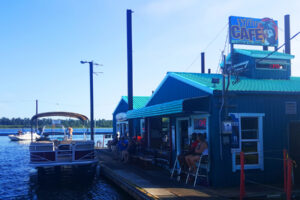Roy Kim wants the Waterfront at Parker’s Landing mixed-use urban center to provide visitors with “a sense of place” when it opens in 2024, and believes that the first phase of construction will allow the development to deliver on that promise.
During the Port of Camas-Washougal’s Feb. 3 commission meeting, Kim, the owner of Portland-based RKm Development, presented his latest vision for the general layout of the first phase of construction, scheduled to begin in fall 2022.
The plan features several streets, including a main thoroughfare that will stretch east and west along the Columbia River, and four buildings that will contain 260 apartment units and 56,000 square feet of retail and restaurant space.
“That’s actually a lot of buildings for the first phase, but we did that purposely because we want to create as much of a ‘sense of place’ in the first phase as possible,” Kim said. “Along with (the Ninebark (apartments), hopefully there will be activity right off the bat. In general, we wanted one area to be the core. It’s like a town that has its ‘Main Street.’ This (development) should have a core that is a focus of activity.”
The main street — tentatively named “Waterfront Way” — will be designed to hold events and other activities, according to Kim.




